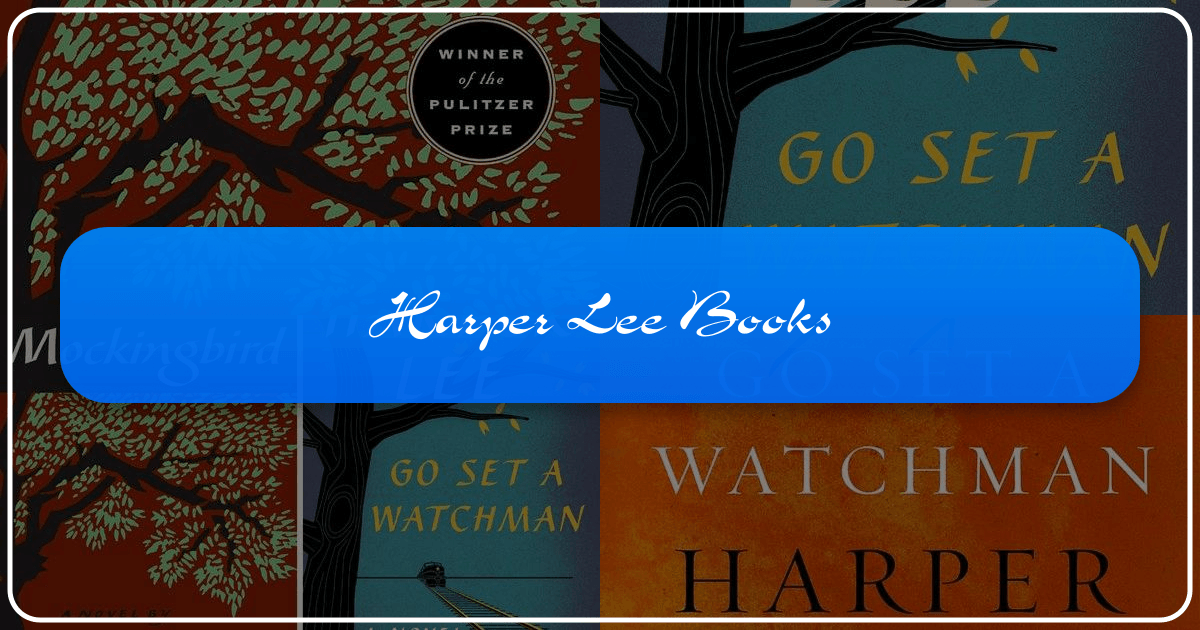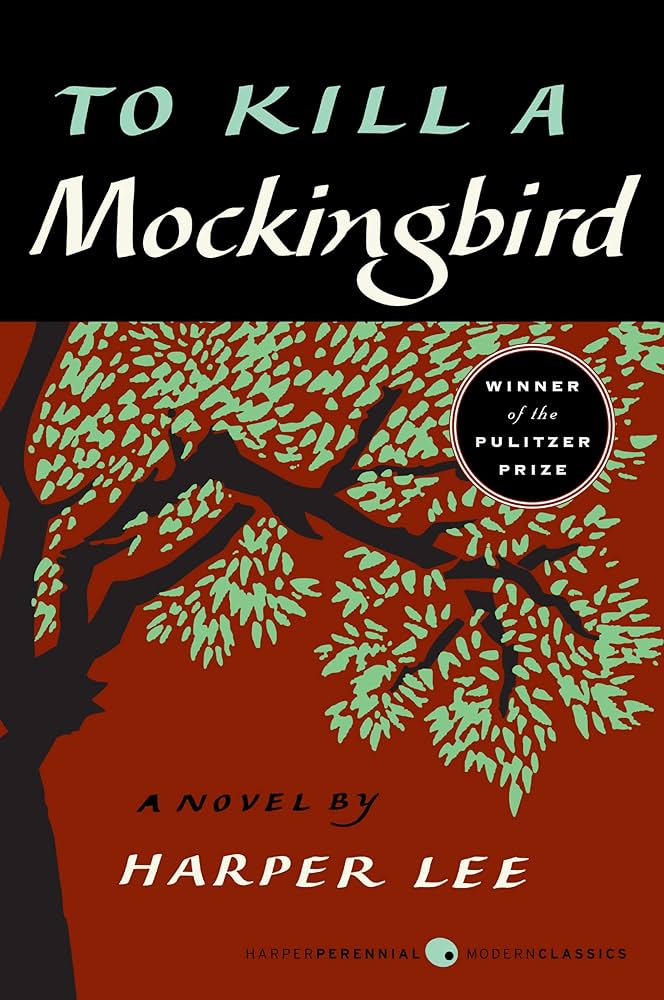Harper Lee Books

Harper Lee, a name synonymous with Southern Gothic literature and a powerful exploration of racial injustice in the American South, captivated readers worldwide with her enduring classic, To Kill a Mockingbird. This article delves into the works of Harper Lee, examining her literary achievements, the cultural impact of her writing, and the enduring legacy she left behind. We will explore her books, her writing style, the inspirations behind her stories, and the lasting influence of her work on literature, film, and society.

Harper Lee’s Literary Works: A Deep Dive
Harper Lee’s literary contributions are primarily defined by two novels: To Kill a Mockingbird and Go Set a Watchman. While significantly different in tone and focus, both books share thematic elements and characters, offering a unique perspective on the changing social landscape of the American South. The Land of Sweet Forever, a posthumous collection of short stories and essays, further illuminates her literary style and worldview.
To Kill a Mockingbird: A Timeless Classic
Published in 1960, To Kill a Mockingbird immediately established Harper Lee as a major literary force. Narrated from the perspective of Scout Finch, a young girl growing up in the racially charged atmosphere of 1930s Alabama, the novel explores themes of childhood innocence, racial prejudice, and the complexities of justice. The iconic character of Atticus Finch, Scout’s father and a courageous lawyer defending a wrongly accused Black man, became a symbol of moral integrity and the fight against injustice.

The novel’s power lies not only in its compelling narrative but also in Lee’s masterful use of language. Her prose is both simple and evocative, capturing the innocence of childhood while simultaneously confronting the harsh realities of racism and inequality. The vivid descriptions of Maycomb, Alabama, create a sense of place that remains deeply imprinted in the reader’s memory. The novel’s exploration of moral ambiguity, particularly within the character of Atticus Finch himself, invites critical engagement and ensures its relevance across generations. To Kill a Mockingbird is a coming-of-age story, a social commentary, and a profound meditation on the human condition, seamlessly interwoven. Its enduring popularity is a testament to its timeless themes and the power of Lee’s storytelling.

Go Set a Watchman: A Complex Sequel
Published in 2015, Go Set a Watchman surprised many readers, not as a sequel to To Kill a Mockingbird but as a prequel in terms of its writing, with the story taking place after that of To Kill a Mockingbird. Written earlier in Lee’s career, this novel revisits the character of Scout Finch as a young woman grappling with the realities of racial segregation and the flaws within her own community, specifically those associated with her previously idolized father, Atticus.
Unlike the relative innocence and optimism of To Kill a Mockingbird, Go Set a Watchman offers a more cynical and disillusioned perspective. Atticus’s character is presented with complexities and flaws not previously explored in To Kill a Mockingbird. This shift in portrayal caused considerable controversy among readers, sparking debates about the nature of heroism, the evolution of social attitudes, and the interpretation of literary characters. However, it also provided a deeper insight into Lee’s writing and her views on the ongoing struggle for racial equality. The novel’s reception underscores the fact that literary works, even those deeply rooted in personal experience, are subject to interpretations based on the contextual realities and societal changes that occur after their creation.
The Land of Sweet Forever: A Glimpse into Harper Lee’s World
This posthumously published collection of short stories and essays offers a glimpse into Harper Lee’s less-known works. While not achieving the same level of widespread recognition as her novels, these pieces showcase her narrative skills and provide further context to her literary vision. Through these works, we can gain a richer understanding of her creative process, the influences that shaped her work, and the evolution of her writing style. The diversity in tone and style found in The Land of Sweet Forever demonstrates the versatility of her talent and showcases her ability to engage with different forms of literary expression.
Harper Lee: Author and Inspiration
Harper Lee’s life and experiences directly shaped her writing. Born in Monroeville, Alabama, in 1926, she grew up surrounded by the social realities of the American South, witnessing firsthand the racial tensions and prejudices that would become central themes in her novels. Her experiences shaped her observations and provided a basis for crafting compelling narratives, making her works resonate with an authentic portrayal of the time and environment.
Lee’s Writing Style: Simplicity and Depth
Harper Lee’s writing is characterized by its understated elegance and deceptively simple style. She employed a clear and accessible narrative voice, often reflecting the perspective of a child, to present complex and challenging social issues. This stylistic choice not only made her novels more accessible to a broader audience but also heightened the impact of her message, allowing the reader to confront difficult themes through a lens of naiveté that reveals the often unseen truths within societal prejudices. Her choice of language contributes to the power and resonance of her work.
Inspirations and Influences
Harper Lee’s close friendship with Truman Capote played a significant role in shaping her work. Their shared childhood in Monroeville and their subsequent literary careers in New York City created a dynamic exchange of ideas and experiences. The characters and narratives found in their novels reflect the mutual influence of their friendship, with elements of their shared background evident in both of their works. They collaborated on In Cold Blood, underscoring their shared interest in storytelling and the complexities of the human condition. This collaboration, along with their shared experiences, demonstrates the power of creative collaborations in shaping individual literary contributions.
The Enduring Legacy of Harper Lee
Harper Lee’s literary contributions have had a profound and lasting impact on literature, film, and society. To Kill a Mockingbird remains one of the most widely read and studied novels in the world, continuously prompting conversations on justice, equality, and the human condition. Its continued presence on school curriculums worldwide attests to its power and lasting relevance. The film adaptation, starring Gregory Peck, solidified Atticus Finch as a cultural icon. The success of the film and subsequent adaptations contributed to maintaining the novel’s prominence in the collective consciousness.
Cultural Impact and Adaptations
The impact of To Kill a Mockingbird extends beyond the realm of literature. Its themes and characters have permeated popular culture, inspiring countless discussions, essays, and critical analyses. The novel has been translated into numerous languages, further solidifying its international influence and broad appeal. The lasting impact of To Kill a Mockingbird is a reflection of its ability to resonate universally, across multiple linguistic and cultural contexts, and its exploration of universal themes. Its presence in various media demonstrates the adaptivity and resilience of the underlying themes presented in the original work.
Awards and Recognition
Harper Lee’s literary achievements were widely recognized, culminating in the prestigious Pulitzer Prize for Fiction for To Kill a Mockingbird. This award, along with other literary honors, underscores the critical acclaim and societal recognition she received for her contributions to American literature. The awards bestowed upon Harper Lee mark a formal validation of the lasting importance and impact of her literary contributions on the literary world.
Communities and Discussions
To Kill a Mockingbird continues to spark lively debate and discussion in literary circles, classrooms, and social media. The book’s complexities and enduring relevance make it a subject of ongoing interpretation and critical engagement. The sustained interest in her novels created communities and discussions centered on her works, with readers exploring the book’s themes and implications and sharing their perspectives in multiple settings. The ongoing critical and public engagement with her works is a testament to the power and timelessness of her storytelling.
In conclusion, Harper Lee’s literary legacy is one of profound impact and enduring relevance. Her novels, along with her essays and short stories, continue to inspire readers, stimulate critical discussion, and serve as a powerful reminder of the importance of moral courage and social justice. Her works remain significant not only for their literary merit but also for their continuing contribution to vital societal discourse.